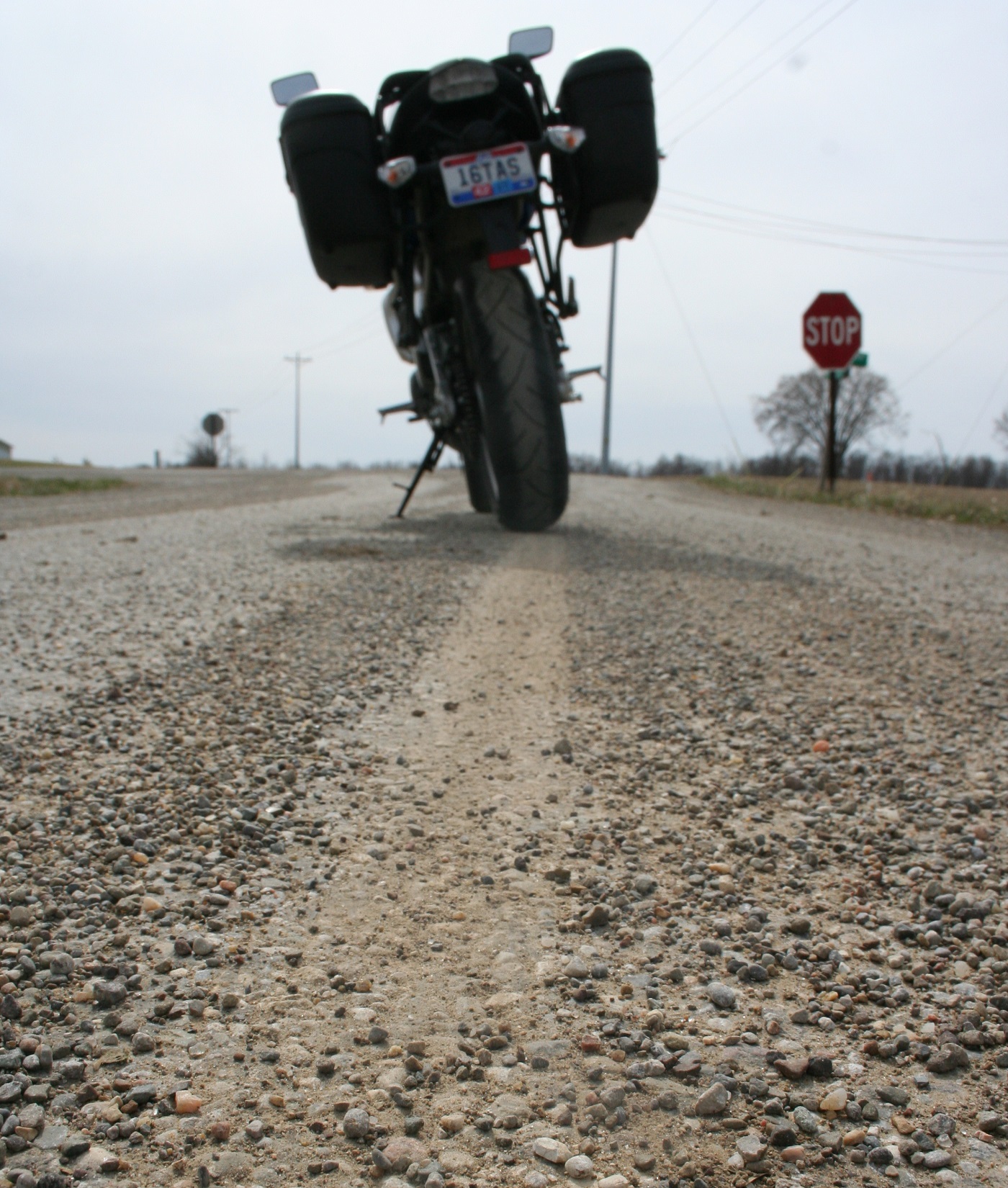For those of us in the northern half of the United States, it’s the time of year when we’re happily getting the motorcycle out of hibernation and taking those first good rides of the year. In the enthusiasm, it’s easy to forget that spring presents some unique challenges and hazards we may not encounter the rest of the year, so in addition to making sure your motorcycle is ready, the key to having fun and staying safe (can’t do the former if you don’t do the latter) is to ensure you’re mentally prepared.
Spring’s unique hazards fall into three basic categories: where we ride, who’s around us and what’s within us.

Cinders, sand and gravel applied to the roads in winter can make traction scarce and stopping and cornering hazardous until spring rains wash it away.
Environmental hazards
Spring can be a messy time of year on the road. Where I live, the biggest hazard happens to be sand, gravel or cinders that the local road departments strew around at intersections and on steep grades when it snows. It takes a lot of spring rain to wash all that grit away, and meanwhile it piles up in traction-robbing clumps. I’m especially cautious around rural intersections this time of year and sometimes the required line through a curve is not the sweeping arc I’d choose under ideal conditions, but one that follows the asphalt that’s been swept clean by car tire tracks.
Thinking in advance about the potential spring hazards in your area will help you spot them sooner and react more quickly. In areas prone to spring rains and flash floods, could there be sand or other debris washed across that low spot in the road ahead? In the mountains, roadside snow banks are a sign to watch for snowmelt running across your path. You don’t want to be leaned over steeply and hit a quarter-inch-deep stream of cold water flowing across the pavement.
Urban riders must be vigilant for the potholes that bloom in spring as reliably as flowers. Trail riders know that winter ice storms probably dumped branches and trees in their path and rain could have washed away part of the trail. The key is to anticipate the hazards in your particular riding environment, be alert for them, and be ready to react decisively if they appear.
Beware the other guy
We all know those infamously common six words that follow so many car-motorcycle collisions: “Officer, I didn’t see the motorcycle.” It can be infuriating when car drivers look right at us but pull in front of us anyway, but they may be telling the truth when they say they didn’t see us. Researchers who have studied the phenomenon call it “inattentional blindness.” In one of the best known and most interesting studies, test subjects given the task of watching a video of people passing around a basketball and counting the number of passes were totally oblivious to a person in a gorilla suit walking through the scene. They swore it never happened until they were shown the video again. (Still not convinced? Watch this video and test yourself.)
Basically, people see what they’re looking for, and a driver about to turn left is mainly looking for an oncoming car. The image of the motorcycle hits his retina, but his brain ignores it. In one sense, the driver truly doesn’t see us.
This ever-present danger increases greatly when motorcycles have been absent from the roads for several winter months. Drivers aren’t used to seeing motorcycles, much less actively watching for them.
What can we do? Realize that this hazard is at its peak this time of year. Be extra alert at intersections and other danger spots. Choose a lane position that optimizes the space between us and threats. Always be thinking about an escape route or a plan of action if the worst-case scenario begins to unfold. And finally, follow that old piece of advice: Ride as if you’re invisible. Because to some inattentive drivers, essentially you are invisible.

As soon as the weather breaks, everyone wants to get out for a ride. Just make sure you’re ready.
Internal threats
Aside from external threats such as debris washed across the road or careless drivers, we can sometimes be our own enemies. After a winter layoff, our skills are dull. Even for those of us who ride all winter are out of practice because our mileage is usually very limited.
So even though we can’t wait to get out on the road or the trails when the first nice day arrives, a little practice first makes good sense. Street riders should practice some emergency swerves and stops in a parking lot before charging down a favored stretch of twisties. Trail riders can spend some time on forgiving terrain, relearning the feel of the tires cutting loose and hooking up, before they set out to conquer that challenging single-track that gave them such trouble last summer. These drills refresh our muscle memory of the crucial feedback the motorcycle provides.
Also, if your first rides of the season are group rides, keep in mind that all your friends are rusty from the layoff, too. Extra space is a good idea.
Spring has returned and you can finally ride. The last thing you want to do is to fail to recognize and avoid one of the specific hazards of spring and put yourself or your motorcycle out of commission, just when the fun is starting.
